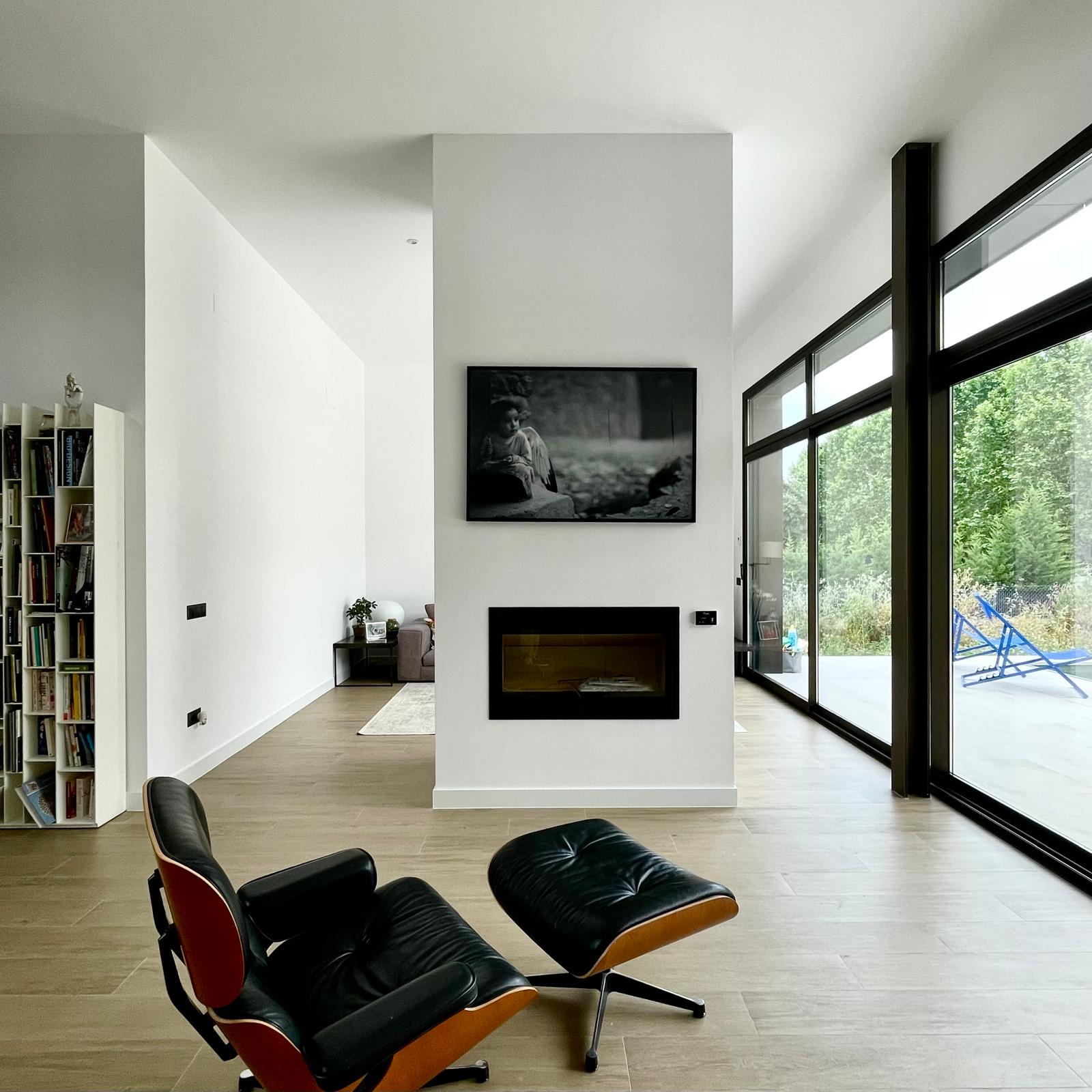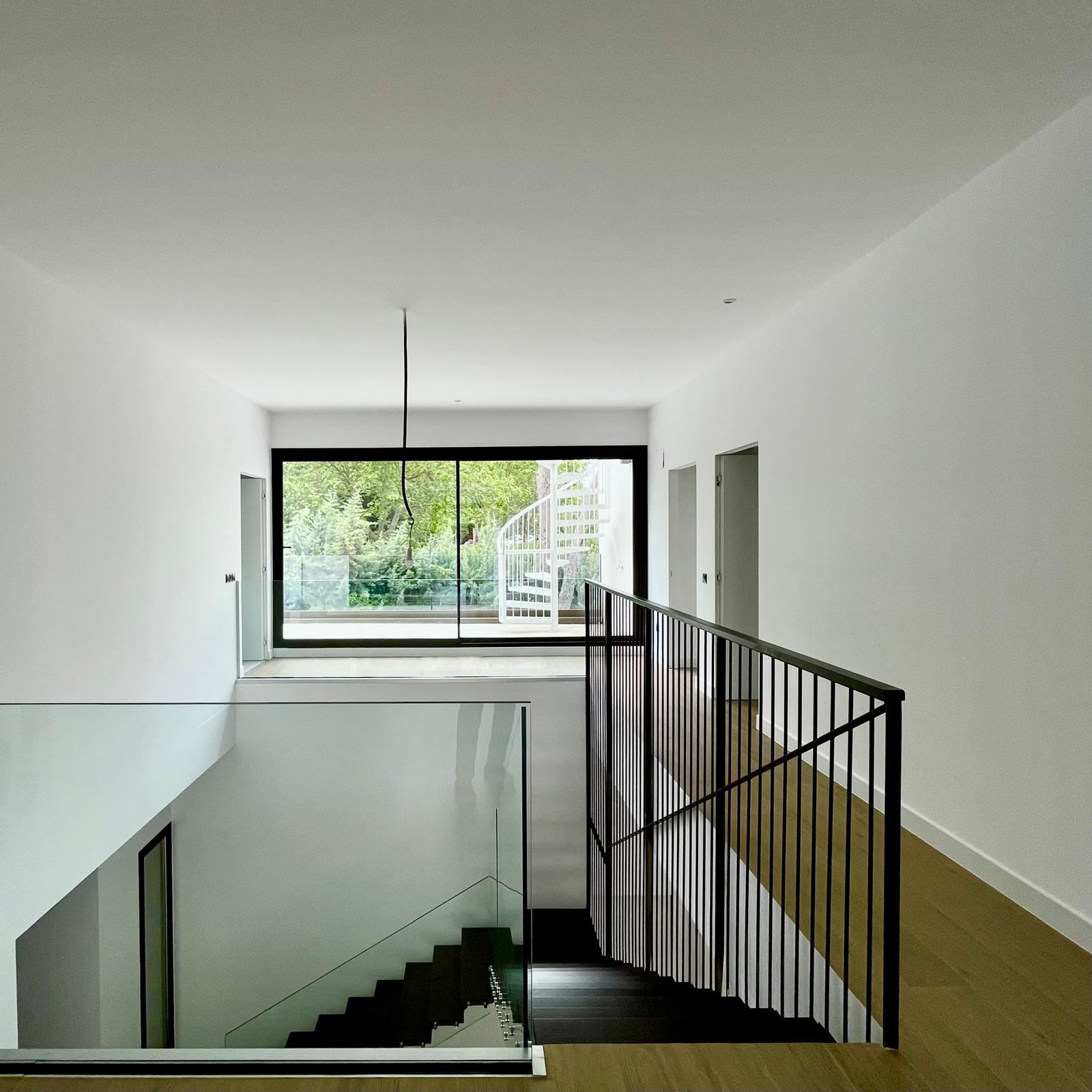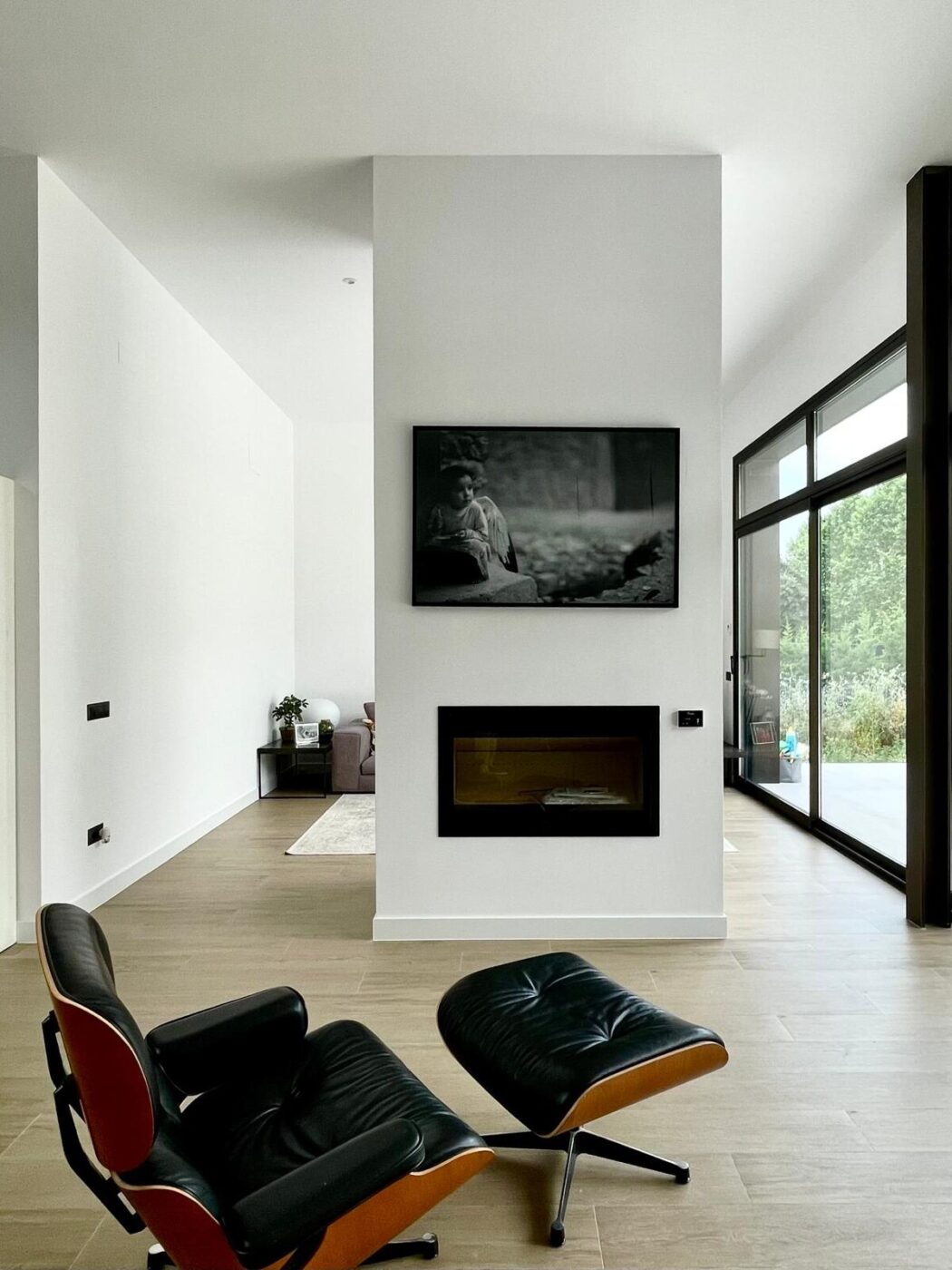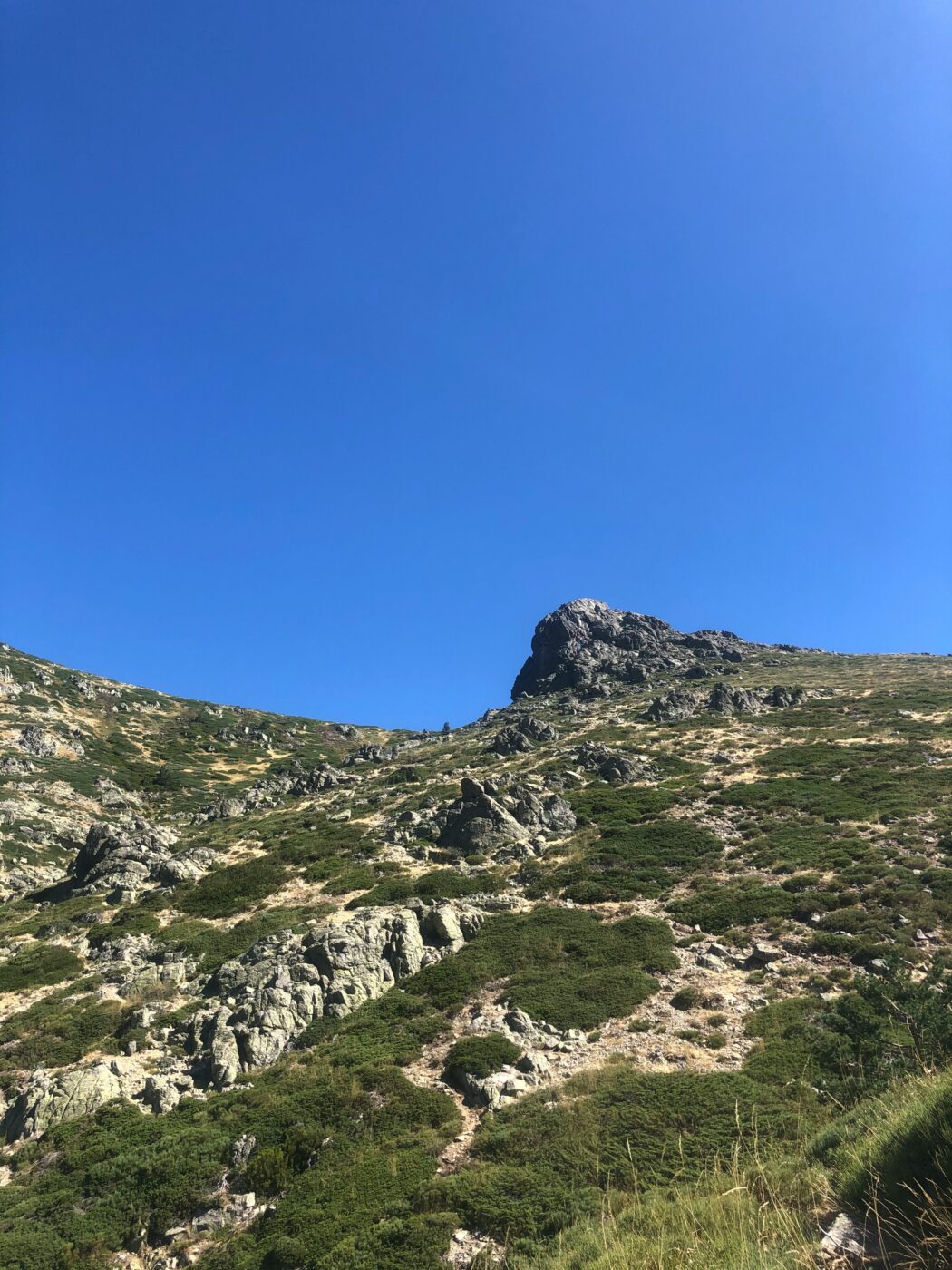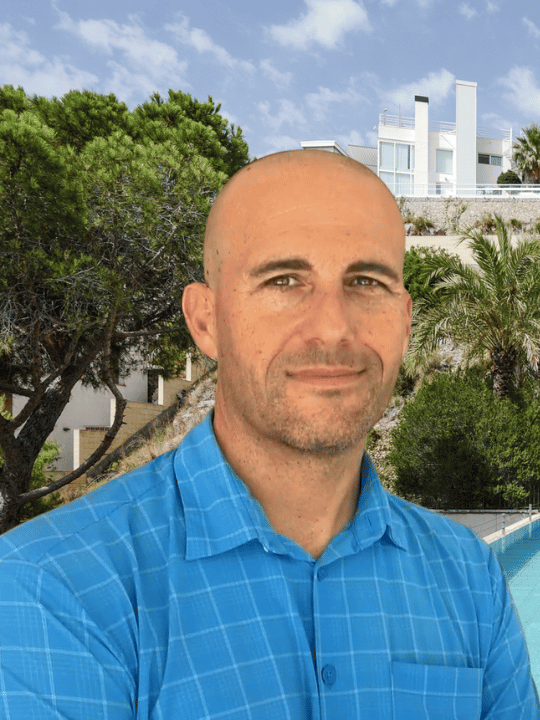Simon and Naiara share their journey of building a custom-designed villa in Madrid, revealing design insights, planning challenges, and the importance of expert guidance when building in Spain.

Architect Builds Her Own Villa in Spain – Here’s What Happened
Building a new home in Spain can be a rewarding experience, but it’s not without its challenges, especially if you’re navigating a foreign legal system and managing a complex build process in your second language. That’s what makes this recent project in Fuente del Fresno, Madrid, so noteworthy.
Architect Naiara Vegara and her husband Simon Maudsley recently completed a bespoke villa with the support of Eco Vida Homes. The result is a home that reflects their lifestyle and values, while overcoming the typical pitfalls many foreigners face when building in Spain.
This article outlines the key takeaways from their project, what they did, why it worked, and what anyone considering a similar journey can learn.
From London to Madrid: Why Build, Not Buy
Nayara and Simon had recently moved from London to Madrid with their family. Like many returning expats or international homeowners, they were faced with two options: purchase and renovate, or acquire land and build something new.
They chose the latter. “We found one that was the right size, the right price,” Simon says of the plot. “It was just the perfect opportunity for Naiara to build her first project that was actually her own.”
Building new allowed them to create something that aligned perfectly with how they wanted to live. Naiara, an architect by profession, saw it as an opportunity to apply her design sensibilities to a personal project for the first time.
Designing Around Light, Space and Flow
Having lived in London’s dense, urban housing, the couple knew exactly what they didn’t want: small rooms, dark corridors and cramped layouts. In contrast, this home would focus on space and natural light.
Nayara designed the house around those principles, with open-plan spaces and generous ceiling heights. “The design tries to avoid corridors in order to have an open flow,” she explains.
A key feature is the central staircase set within a large void that visually connects the entire house. Another standout is the use of bespoke tiles on the façade. “It’s an element that adds uniqueness and personality to the project,” Nayara says. The tile design was inspired by the pine fruit of local trees, an example of how site and surroundings informed the architectural decisions.
Budgeting Smarter, Not Bigger
Ceiling height played a significant role in the design. While the local building regulations in Fuente del Fresno limited the height to approximately eight metres, many neighbours added a third storey by compromising on internal dimensions.
Simon opted for a different solution: “On the ground floor, we have, I think it’s 3.7 metres ceiling height. Everyone told me it would be a terrible idea… but you walk in and it’s absolutely fantastic.”
Rather than chase square metreage, the couple focused on proportions that offered volume and comfort. It’s a clear example of budget being applied strategically for a higher-quality experience.
Why International Buyers Need the Right Support
Although Simon had extensive experience with renovations in the UK, the Spanish system presented an entirely different level of complexity.
“I’ve done a number of refurbs in London… but here in Spain, dealing with a project that was 20 times more complicated, in a language that I’m not especially comfortable with, it would have been absolutely impossible.”
That’s where Eco Vida Homes made the difference. The team provided comprehensive oversight from managing the tender process and selecting contractors to ensuring that work was being done correctly and at the right price.
As Simon recalls, “Having you available on hand basically to cover my back… was invaluable.”
What Others Can Learn from Their Experience
This project offers valuable insights for anyone considering building in Spain:
-
Start with a clear lifestyle brief: Know what you want from the space, light, flow, and outdoor access and let that inform the design.
-
Choose your plot carefully: Legal buildability, solar orientation, and local planning restrictions should all be verified in advance.
-
Be realistic about complexity: Even experienced project managers find building abroad difficult without local support.
-
Design with climate and comfort in mind: High ceilings, open flow, and energy-efficient planning can improve daily life, and long-term value.
-
Work with a team who understands the local system: Language, bureaucracy, and planning laws are easier to navigate with the right partners.
Eco Vida Homes has built its reputation helping international clients build in Spain with clarity, professionalism and integrity. From land searches to Passive House design and complete project management, the focus is always on reducing stress and ensuring a successful outcome.
Watch the Full Story
This article gives you a summary, but the full story is best heard from Simon and Nayara themselves.
You can also click here to watch the video tour of their home, hear more about their design decisions, and see what they learned throughout the process.
Planning your dream villa in Spain?
Whether you’ve already got a plot or you’re just starting to explore the possibilities, a call with John, our founder and British Chartered Surveyor, is the perfect place to begin. No pressure – just expert guidance from someone who’s been helping people build in Spain for over 30 years.
👉 [Book Your Free Discovery Call]
Let’s explore how your dream home could take shape.

